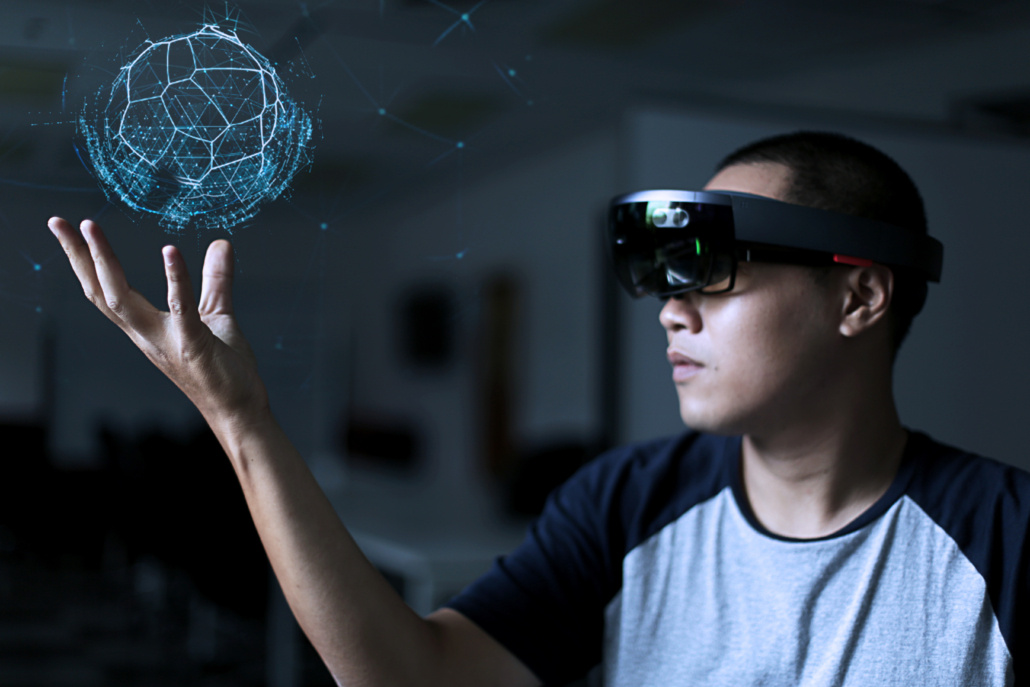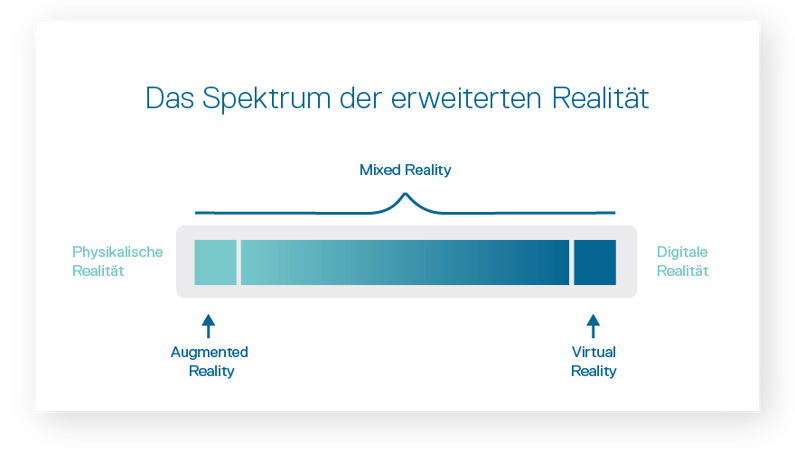A Blog Series introduction to Digital Reality Expansions
With all the freshness of spring, we are launching a new blog series, bringing new perspectives in every way. More specifically, these will be digitally enhanced perspectives that offer insights into the design of new work environments and work practices. With the blog series “Der Tellerrand der Realität”, we are bringing together in five parts an overview of digital reality expansions.
In the next five months, you will gain insights into the following topics:
- Part 1: AR / VR / MR / XR – What are we even talking about?
- Part 2: How is XR designed? Focus on graphical User Interfaces
- Part 3: How is XR designed? Focus on multisensory, ergonomics and UX
- Part 4: Where does XR deployment make sense?
- Part 5: Alphagate and the new reality – the projects we have implemented
“Reality has always been too limited for human imagination.
We are always trying to surpass it.”
– Brenda Laurel, Pioneer in the field of virtual reality
Extended Reality
When reality suddenly becomes more than we imagined.
Recently, the term Extended Reality (XR) has been circulating in various forums and platforms, and now also here with us. But what does this term actually encompass? “Extended Reality”, or XR, is the umbrella term for all technologies that allow us to digitally enrich, expand, or simulate reality. The term XR thus unites not only the currently developed technologies, which include augmented, mixed, and virtual reality, but also all future technologies and devices that will enable (or already enable) us to look beyond the confines of reality.

AR, VR, MR – what’s what?
The first technological developments in the field of three-dimensional vision date back to 1838, when physicist Sir Charles Wheatstone developed the “stereoscope.” With this invention, he confirmed the theory of binocular vision—the theory that our eyes each see a slightly altered image, and this difference is what leads to our three-dimensional perception.
Many developments and ideas later, Ivan Sutherland, a computer graphics specialist and one of the key pioneers of virtual reality, built the first virtual reality headset in 1968 and convinced NASA of the promising potential of this still very cumbersome technology.
In 1987, virtual reality was first mentioned in the „Oxford English Dictionary“.
Virtual Reality (VR) is a completely computer-generated reality created through either moving or still three-dimensional images. While using VR applications, the real external world is no longer perceived, at least visually. The most common devices for experiences in virtual realities are specialized head-mounted displays, which we know as VR glasses. Currently, two classes of VR devices are available on the market: high-end headsets like the Oculus Rift or HTC Vive, which are connected to a conventional PC, and headsets like Google Daydream, Samsung GearVR, or Google Cardboard, which function by using regular smartphones and are therefore significantly cheaper. Popular applications for VR can be found in gaming, the real estate industry, as well as in education and training purposes.
Augmented Reality (AR) enhances reality with the help of a device like a tablet or smartphone, making it come alive. This liveliness is limited to the used device, but because tablets and smartphones are easily accessible to a wide audience, AR applications can reach a broad public. A well-known example of an AR application that has gained popularity in the consumer sector is the smartphone game “Pokemon-Go”, in which virtual Pokémon are caught in the real-world environment through a smartphone.
In Mixed Reality (MR), the actual reality is enriched in such a way that the real environment merges with virtual elements to form a perceived reality. MR combines characteristics of both VR and AR, creating entirely new possibilities for applications. This special form of reality enhancement requires a special data/MR headset. One example of an MR headset is the Magic Leap One or Microsoft’s HoloLens. With the HoloLens 2, Microsoft has also released a data headset specifically designed for industrial needs.

What are the differences and similarities between VR, AR and MR?
As we have now learned, all XR technologies are about enhancing reality with virtual elements. Depending on what we want to achieve with our XR experience and the role the environment plays, a decision is made between using AR, VR, or MR. With VR, we have the ability to teleport a user into an entirely new dimension/setting/action/place/world or place them in training situations that would be physically impossible or would require significant effort. AR allows us to receive contextual assistance on-site based on the current situation, and MR extends this capability by offering the added benefit of free hand usage.
Outlook – here’s what’s coming in the next part:
In the next part of our blog series "The Edge of Reality," we will take a closer look at graphical control elements and their special requirements compared to a traditional on-screen HMI.
